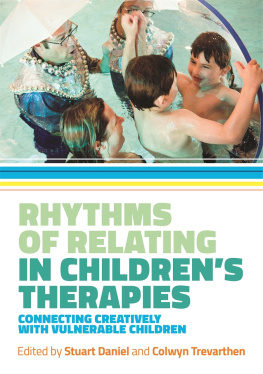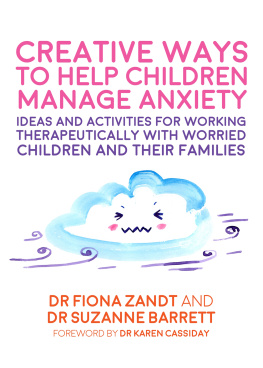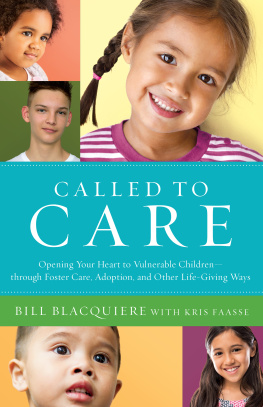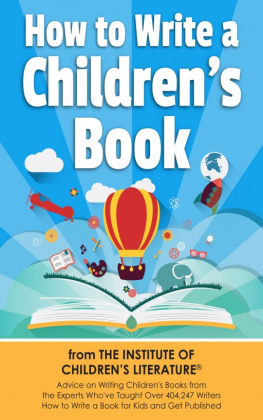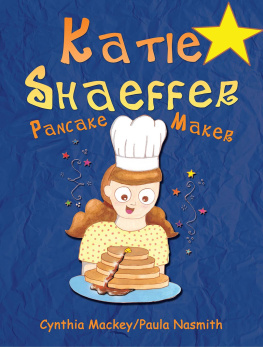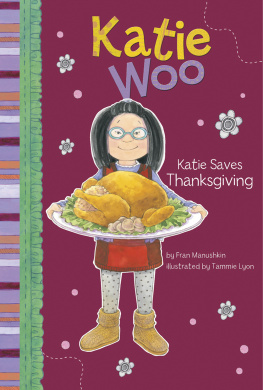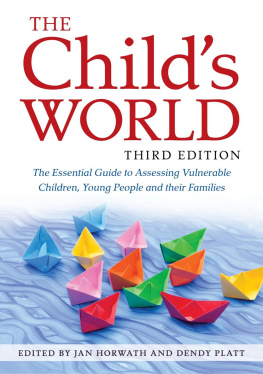Assessments of vulnerable children and families are often required in challenging circumstances and with a requirement to be completed within very tight timescales. Ideally, we need a wide lens through which to consider their individual needs, but so often become involved following a crisis event, which narrows the focus onto securing immediate safety. Assessments can inevitably become incident-driven when they ought to focus more broadly on how to improve outcomes for children and their families, enabling children to meet their potential as well as securing safety if necessary. We can only do this by reaching robust, evidence-informed formulations, that can in turn lead to effective plans and interventions.
Good formulation is often built on a premise that, at essence, people make sense. All individuals function in the way that they function for a reasonthe understanding of the why leads naturally to an awareness of what , along with the flexible capacity to explore how . (Blaustein and Kinniburgh 2010, p.46)
We can only reach sound formulations when we holistically under-stand what is happening day to day in children and their familys lives. If we just look to the outcome (e.g. poor school attendance) without understanding the context and the driver for the behaviour (the young person is a carer for a single parent with mental health difficulties), then it is likely that our intervention plan will be less effective and outcomes less positive.
However, when we feel under pressure to complete assessments swiftly, our time, resources, energy and sometimes our motivation are depleted. This is when our creativity and empathy can also become sidelined. For diverse reasons, we need to get the job done as quickly as we can, and within such a context it can feel as if there is simply not enough time to be creative in our work with children and families. When practitioners are feeling overwhelmed, it can be harder to comprehend how working creatively or even non-verbally could possibly yield the information we need in the timeliest manner, and lead to better outcomes for families.
Whilst I expect this book will be useful for practitioners across diverse fields, because my core training is in social work it is inevitable that in thinking about creative assessments with vulnerable families and their children, there will be a social care bias, but please keep an open mind if this is not your field. The thematic approach to the chapters means that the exercises can be adapted across many assessment contexts for unique children and families in their own unique milieu. In social work, it is the Framework for the Assessment of Children in Need and their Families (DoH 2000) that provides us with a map to shape our thinking in social work assessments. This framework is organised into three domains representing critical components of the childs internal and external worlds, comprising:
the childs developmental needs
family and environmental factors
parenting capacity.
But irrespective of the framework within which you are practising, assessments should never be simply a static, paper exercise. Horwath talks about assessment as a relational activity (Horwath 2010 p.43); as an assessor you are a critical component in the process and can heavily influence the outcome. Even in the most urgent of circumstances, where risks to safety can feel intolerably high, the quality of our interactions with children and families can influence the outcome, both positively and negatively. Effective relationships between practitioners, children and their families increase the likelihood of a commitment from all parties to meet the needs of the child. As practitioners, we need to think about how we use ourselves as a resource, in recognition of the fact that the quality and outcome of any assessment is significantly affected by our success in actively engaging the child and family (Horwath 2010, p.61).
Figure i.1 The Assessment Framework
(Department of Health et al . 2000)
Yet, in such contexts, there will always be a power imbalance between the practitioner, the child and the family. It is essential therefore to create the optimum conditions in which children and their families feel both confident and safe enough to express their views and share their lives with us. In my experience, offering a creative, collaborative assessment approach, without sole focus on the spoken word, provides a less threatening experience that will ultimately contribute to better outcomes for children and their families. By developing our own creative resources as practitioners, we can challenge practice that puts children and young people on the receiving end of adult-centred communication. Where we fail to develop the depth of relationships necessary to safeguard children, children are inevitably not safeguarded. We must be convinced that we will gain insight by listening to childrens experiences, otherwise we are unlikely to truly engage with their voices in anything other than in tokenistic ways (Dunhill, Elliot and Shaw 2009, p.40).
This book is therefore motivated by two prime factors. One of my main concerns when it comes to social work assessments relates to an over-reliance on expecting children and families to talk about traumatic or distressing events. Whilst there are many elements that influence the efficacy of an assessment, I am concerned about the quality of the information we gather when we prioritise verbal communication and what this then means in terms of outcomes for vulnerable children and their families. In this book, I will offer many creative activities as an alternative to, or to facilitate, verbal interviews for adults and children, as well as exploring why it can be so hard, if not impossible at times, for traumatised individuals to talk to you about what has happened to them.
The second motivator is a very practical one: how best to gain knowledge and understanding of the child and his caregiving system that allows us to undertake effective, child-centred assessments within very real practical constraints; of time, experience, confidence and potentially resistance. The Framework for the Assessment of Children in Need and their Families (DoH 2000) is explicit about the need to: see the child; observe the child; engage with the child; talk with the child; and do activities with the child (my italics). However, its clear to me that as practitioners we dont always have as much time as we might like to spend planning direct work sessions and gathering together resources. We can be constrained by excessive levels of case recording and other bureaucracy, tight timescale for completing work, high caseloads, and compliance with procedures and management dictates (Ferguson, 2016, p.3). We may have very limited time to build relationships with children and families who might not feel trust in professionals; it is essential therefore to have confidence in the direct work tools we use and to have a range of resources that will meet the diverse communication needs of children and their families.
In over 20 years supporting vulnerable children and young people as a residential care officer, social worker, foster carer and art psychotherapist, I have developed a tried and tested toolkit of ideas and activities, but in the moment, when under pressure I can still struggle to recall an appropriate exercise to use or else risk becoming over-reliant on the same set of activities with which I feel most confident (see also Wrench 2016; Wrench and Naylor 2013). So as well as pulling together my own practice knowledge, I have also researched the relevant literature to adapt ideas found in other publications or articles for assessment purposes. Where this is the case, I direct you to further reading.





